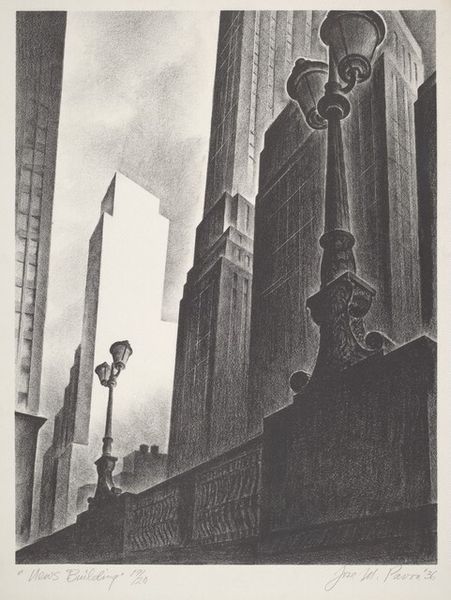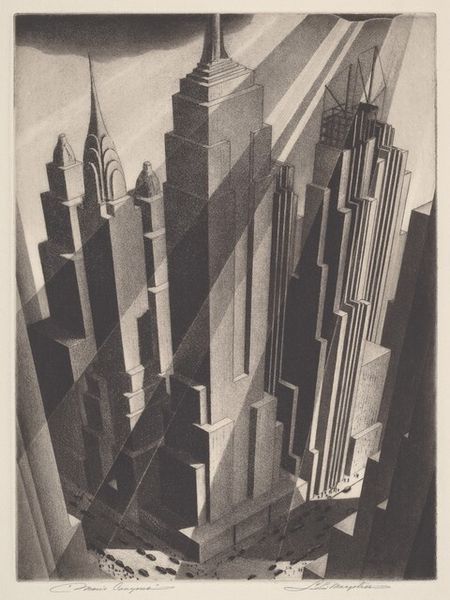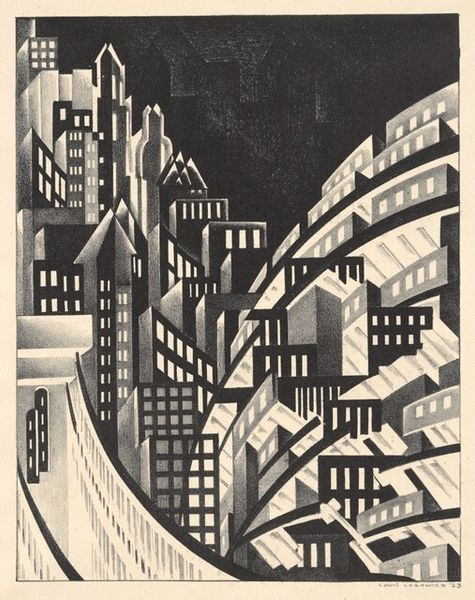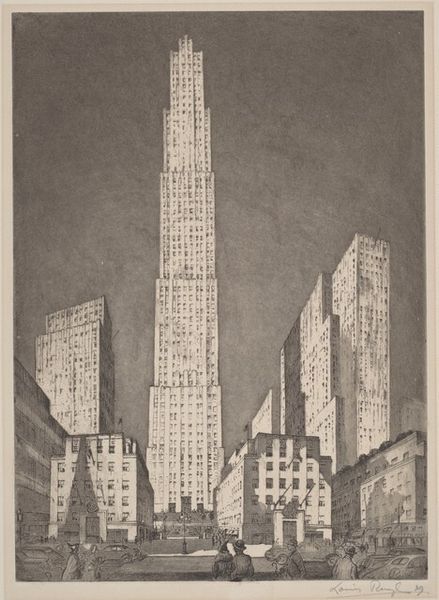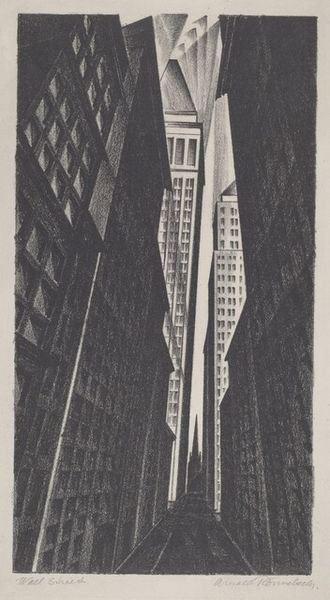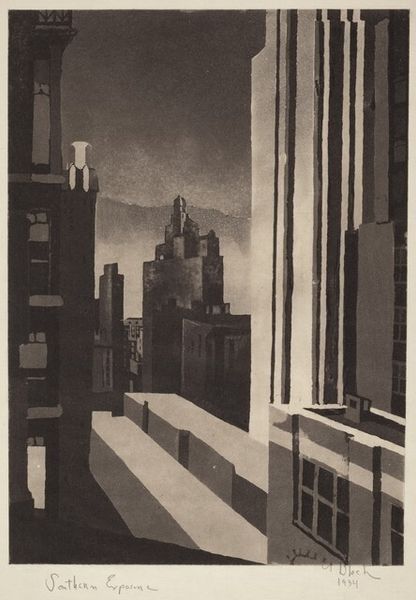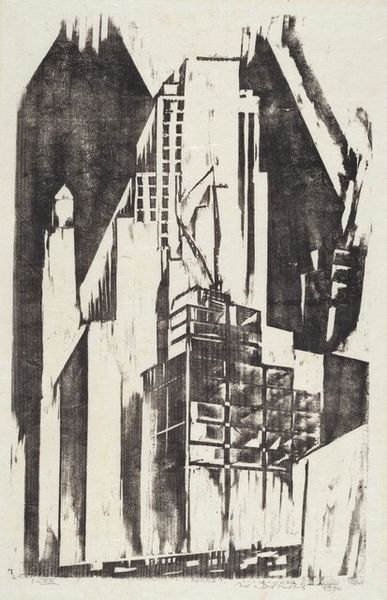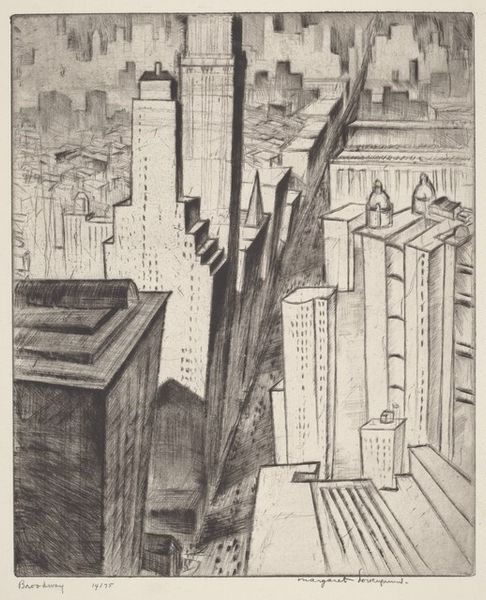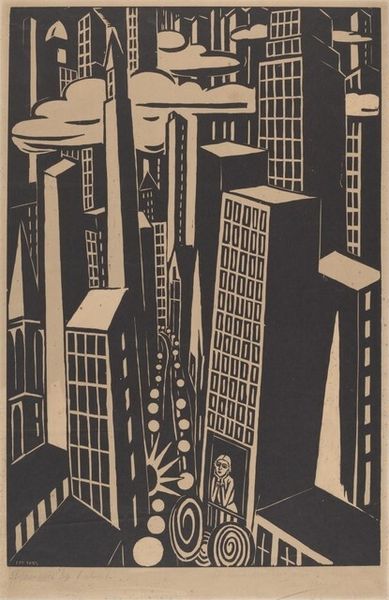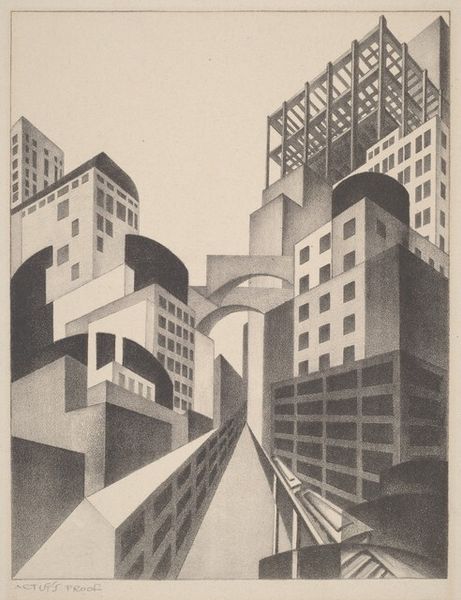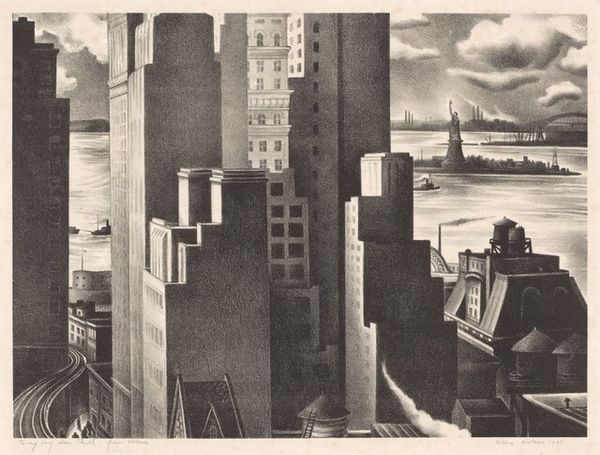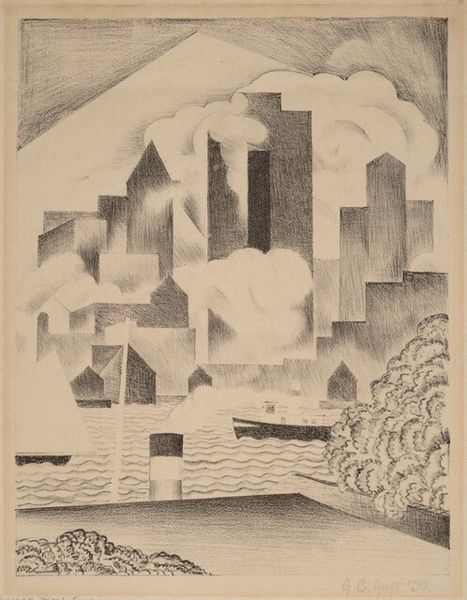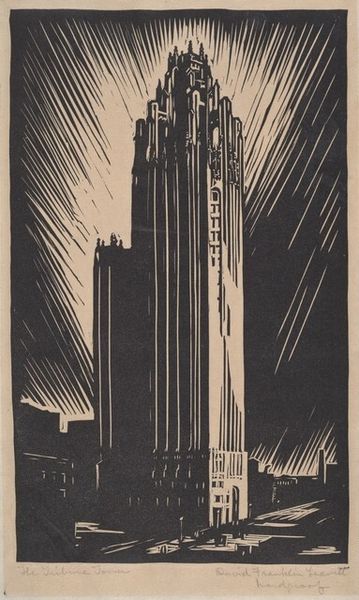
print, graphite
# print
#
geometric
#
graphite
#
cityscape
#
modernism
Dimensions: image: 403 x 279 mm paper: 470 x 324 mm
Copyright: National Gallery of Art: CC0 1.0
Curator: Take a moment to admire this modernist print titled "New York," created in 1935 by Pauline Johnson, executed with graphite. It immediately strikes me as stark and imposing. Editor: Yes, that strong contrast between the looming skyscrapers and the darkness evokes a feeling of almost overwhelming urban density, especially given the print's medium of graphite, it really heightens the texture and tactile qualities of the artwork. Curator: Precisely. Johnson’s skillful use of graphite really brings out the texture. Note the angular geometric shapes dominating the cityscape, each line deliberately placed. We should also acknowledge the potential influence of social events during the 30’s and how that reflects within this artistic creation. Editor: Absolutely, the precision evident in its production hints at the emphasis on efficiency that became central to Modernist thought, in order to produce something new from industrial conditions and technological development, Johnson focused on linear elements in creating the texture of this industrial vision of "New York". Curator: The high vantage point could be interpreted as symbolizing power. Do you find its monochrome palette enhances that feeling of detachment? It is very different from cityscapes of, say, the Hudson River School. Editor: Inarguably, it mirrors the sense of isolation many felt amidst rapid urbanization during that period in history, as populations exploded within industrial and manufacturing districts in larger cities like “New York”. The artist seems to be trying to portray both progress and the effects that process causes upon the social environment. Curator: Moreover, considering how exhibitions and art movements can propel change, one might examine where this artwork would have been seen during its time and to what effect. Where would its public have first experienced "New York"? Editor: Yes, context is everything. Perhaps viewers engaged with Johnson's prints via WPA programs or accessible galleries which aimed to create wider art experiences beyond established institutions. I find myself drawn to think how artists influence our perspective and, conversely, how societal shifts influence them, especially regarding how artists responded to societal concerns during economic difficulty. Curator: These perspectives provide rich context. Examining how materials are skillfully utilized by the artist contributes in the same fashion to our greater understanding. Editor: It really goes to show how engaging with an artwork can peel back layers of material innovation and social engagement that reveal both the skill of the maker and the wider political context.
Comments
No comments
Be the first to comment and join the conversation on the ultimate creative platform.
